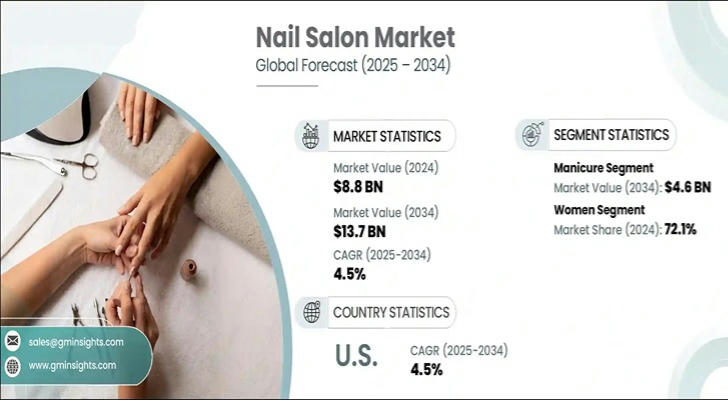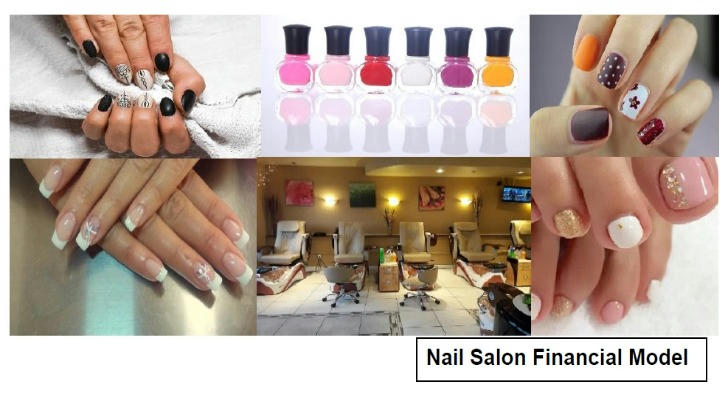A complete analysis of the income and costs of the nail industry: how to achieve profitability and steady development
Want to enter the nail industry, but confused about the income prospects and operating costs? Whether you are just starting to learn nail skills or preparing to open or manage a nail salon, understanding the industry's income structure and cost structure is the key to achieving profitability. This article will analyze the current status of the nail industry in detail for you, help you formulate a reasonable business strategy, and improve profitability.

Ⅰ. Analysis of the current income status of the nail industry
The income level of the nail industry varies depending on the size of the store, service items and customer groups. Generally speaking:
Small nail salons (2-4 service positions): annual income of approximately US$40,000 to US$100,000, and average monthly income of approximately US$3,300 to US$8,300.
Medium-sized nail salons (4-8 service positions): annual income of US$100,000 to US$400,000, and average monthly income of US$8,300 to US$33,000.
Large or high-end nail salon (8 or more service positions): Annual revenue of $400,000 to $800,000 or more, with an average monthly revenue of $33,000 to $66,000.
Revenue mainly comes from basic manicure, gel and crystal manicure, luxury packages and retail products. Basic manicure accounts for 40-50% of total revenue, gel and crystal manicure accounts for 30-40%, luxury and additional services account for 10-15%, and retail products account for 5-10%. There are obvious seasonal fluctuations, and revenue usually increases by about 30% in summer and holidays.
Ⅱ. Main cost structure of the nail industry
The key to profitability is cost control. The main costs include:
Fixed costs
- Store rent: $1,500 to $5,000/month
- Water, electricity and network costs: $400 to $800/month
- Insurance and license fees: $100 to $500/month
- Cleaning and maintenance: $300 to $700/month
- Marketing costs: $200 to $1,000/month
Variable costs
- Nail products (nail polish, consumables, etc.): 15-20% of revenue
- Employee wages and commissions: 35-50% of service revenue
- Training and further education costs: 1-2% of revenue
Rational procurement of materials, optimization of employee structure and control of operating expenses are the keys to increasing profits.

Ⅲ. Profit margin and profitability analysis
The gross profit margin of a nail salon is generally between 50-65%, with higher gross profit margins for service items and relatively lower gross profit margins for retail products. Net profit margins vary depending on the size and management level of the store:
Small stores have a net profit margin of about 10-15%
Medium stores have a net profit margin of about 15-20%
Large or high-end stores can reach a net profit margin of 20-25%
The key to improving profit margins lies in effective cost control, service diversification, and the cultivation of customer loyalty.
Ⅳ. Practical strategies to increase profitability
Whether you are a manicurist, store owner, or entrepreneur, the following strategies can help you achieve profitability:
Diversified services: In addition to basic manicure, add gel, crystal manicure, and art design services to meet the needs of different customers and increase per-customer revenue.
Cost management: Rationally purchase materials, reduce waste, optimize employee commission structure, and control labor costs.
Improve customer experience: Provide quality services, establish membership and loyalty programs, and promote repeat customers.
Flexible marketing: Use social media and local promotion to attract new customers.
Efficient time management: Arrange working hours reasonably, improve service efficiency, and increase daily reception volume.
V. Choose the right training and promotion path
It is particularly important to choose the right training course to enter or improve the nail industry. It is recommended to pay attention to the following aspects:
Comprehensive course content, covering basic care, gel and crystal nail art, art design and health safety.
Sufficient practical opportunities, help to quickly master skills.
Flexible learning methods, support online and offline combination, suitable for different time arrangements.
High certificate recognition, help to enhance customer trust and career development.
Financial support, understand scholarships, grants or installment payment plans to reduce the burden of learning.
Through systematic training, not only can the technical level be improved, but also the customer service ability and business management ability can be enhanced.
VI. Summary
The nail industry has huge income potential, but profitability requires reasonable cost control, improved service quality and customer satisfaction. Whether you are a new nail artist or an entrepreneur planning to open a shop, mastering the industry's income and cost structure and combining it with a scientific business strategy are the keys to achieving steady profits. Choosing a training course and business model that suits you, and actively improving your professional skills and management capabilities will lay a solid foundation for your nail business.
